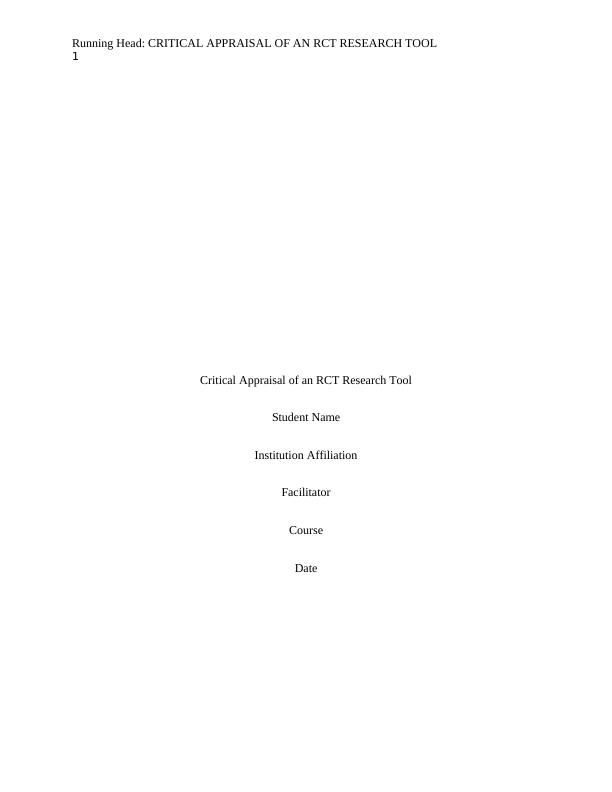Critical Appraisal of an RCT Research Tool Course 2022
JBI Critical Appraisal Checklist for Randomized Controlled Trials
7 Pages1664 Words14 Views
Added on 2022-10-18
Critical Appraisal of an RCT Research Tool Course 2022
JBI Critical Appraisal Checklist for Randomized Controlled Trials
Added on 2022-10-18
ShareRelated Documents
End of preview
Want to access all the pages? Upload your documents or become a member.
Critical Appraisal of Ohura et al. (2011) Randomized Controlled Trial
|9
|2204
|455
Evaluation of effects of nutrition intervention on healing of pressure ulcers and nutritional states (randomized controlled trial)
|8
|1748
|78
Article on Effectiveness of Preoperative Immunonutrition
|4
|691
|137
Critical Appraisal of Article
|10
|2111
|232
Pressure Mattresses in pressure ulcer prevention.
|16
|1410
|19
Report on Randomised Control Trial
|9
|2361
|64



